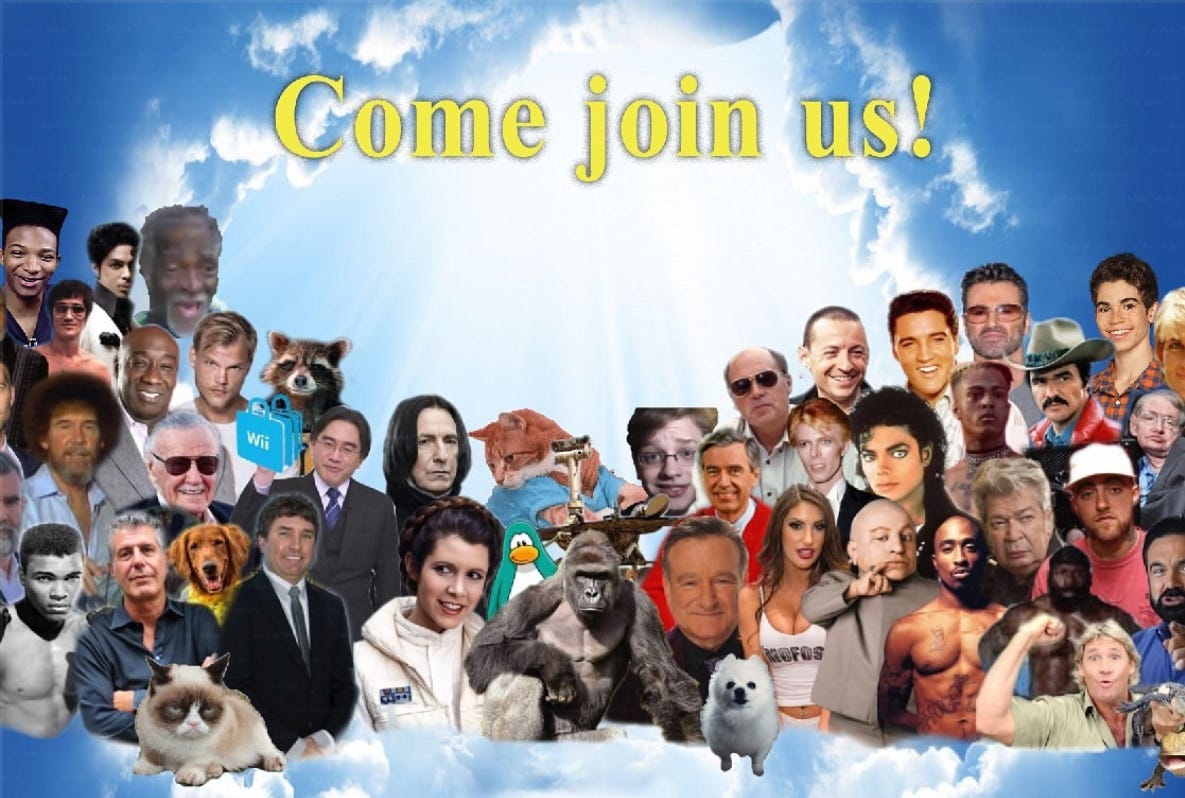About a year ago, there were these compilations circulating on social media of kids recording their parents reacting to fake news about the death of their celebrity crush. Although these videos were just pranks, the death of a celebrity often evokes strong feelings in people. Celebrities, like the other things that make up our experience of life, create a sense of what the world is. So when a celebrity dies, the world as we know it, in a sense, dies a little too. As the things that made up the world of our parents continue to disappear, the shrinking of the world can perhaps create a feeling of claustrophobia. In a sense, the death of the world instills within us a fear of our own inevitable death. But after a death, remnants and memorabilia keep the idea of that thing alive.
This week, I found out that TV is dying. As someone who grew up on Nickelodeon, MTV, South Park, and The Simpsons, I did feel a bit claustrophobic at the news, despite not really watching TV since I was 18. Thinking about a future without television, I can imagine them existing in museums, in photos, and in landfills. Even if they disappear from homes, the idea of the television will likely live on in our memories.
One can imagine a hypothetical future subculture of people who have TVs and watch simulated cable television – almost like how records made a comeback with hipsters. In this sense, the death of a worldly object isn’t marked by its physical death but by the disappearance of it as an idea. The death of a physical object can be reversed as long as the idea still exists. Although it hasn’t happened yet, perhaps one day soon scientists will revive the woolly mammoth.
But not everything makes it into a museum or archive. In a sense, what we save or memorialize depends on our value judgments. Another reel I saw on Instagram recently was about how objects made in the past were durable and beautiful. The video contrasts various objects, showing that today things are manufactured to be cheap and utilitarian. As a result, many objects produced today live a short life before ending up in a landfill or being recycled. Not only do the objects die, but the idea of them is forgotten. Without meaningful things to construct a sense of a world, the death of something is less likely to evoke a sense of claustrophobia – in other words, death is becoming senseless.
The question is, why aren’t things in the world meaningful today? The boring answer is the profit motive. The more interesting answer is the disappearance of sacrifice. I think of sacrifice as a gift—in the sense that it is the destruction of something highly valuable as a way to affirm what one values. As a result, one’s sacrifice is reciprocated with a gift. When we look at objects today, the value that goes into producing them is as low as possible. The motive is not to affirm a higher value like beauty but to maximize one’s return on investment. Perhaps only the things that are preserved are the things that are the product of sacrifice. As a result, death is what reconstitutes the world—by dying, an object reminds us of its value; as a result, we memorialize it or recreate it.







